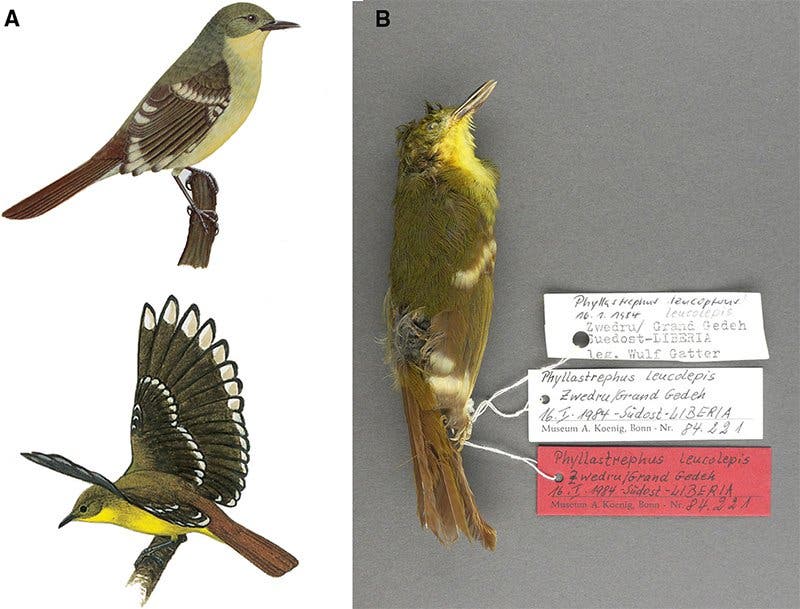Last year, the Liberian Greenbul songbird was taken off the IUCN’s Red List, where it was listed as ‘critically endangered’. The reason for this decision is what you could call ‘unusual’ — in the sense that the species never existed.

Back in 1981 in the West African country of Liberia, one animal was taking off from the perch of history. This strange bird looked strikingly similar to the Icterine Greenbul (Phyllastrephus icterinus), a common bird in the area, but featured strange white spots on its wings. It was sighted a total of 9 times in the Cavalla Forest in Eastern Liberia, and only one specimen was recovered in 1984. This final one had scientists convinced they were looking at a new species — so they named it.
The Liberian Greenbul, scientifically known as Phyllastrephus leucolepis, would start a decades-long search and a unique tale in the history of science.
Spotted, sighted, nonexistent
The elusive species became a kind of holy grail for ornithologists looking for a challenge, but for all their effort over the past 33 years, no more sightings have been reported. It hasn’t gone extinct, and we haven’t been looking in the wrong places, a new paper claims. In fact, the new study reports that P. leucolepis probably never even existed in the first place. According to the authors, the specimen was actually just an Icterine Greenbul sporting an unusual plumage paint job.
It’s not just an assumption. The team, led by Martin Collinson, a geneticist from the University of Aberdeen’s Institute of Medical Sciences and Nutrition at the University of Aberdeen, tested the DNA of the specimen captured all those years ago. Comparative analysis with the Icterine Greenbul genome revealed that the two do, in fact, belong to the same species.
“Comparatively, studies of other species of greenbul revealed large genetic differences between different species, suggesting the lack of difference between the Icterine and the Liberian indicates they are the same bird,” a statement from the University of Aberdeen read.
So it’s not a case of 100% confidence that they aren’t different species — just that they’re so genetically similar and much more similar genetically than the Icterine is to other species of Greenbul out there, that it’s “highly unlikely” the Liberian Greenbul was ever a separate species. The plumage, according to the paper, was potentially caused by nutritional deficiencies while the feathers were growing.
“The Liberian Greenbul has gained almost ‘mythical’ status since it was sighted in the ‘80s,” says Professor Martin Collinson. “We can’t say definitively that the Liberian Greenbul is the same bird as the Iceterine Greenbul but we have presented enough evidence that makes any other explanation seem highly unlikely.”
“The genetic work was performed independently by scientists here in Aberdeen and in Dresden to make sure there could be no error – we both came to the same conclusion.”
Civil war erupted in Liberia in 1989 and raged on until 1997, prevented any large-scale attempt by ornithologists to discover more of these birds in the past millennia. Targeted searches in 2010 and 2013 (supported with funding from the RSPB and the African Bird Club) failed to find any signs of the species, either, which prompted this research.
The paper “Taxonomic status of the Liberian Greenbul Phyllastrephus leucolepis and the conservation importance of the Cavalla Forest, Liberia” has been published in the Journal of Ornithology.



